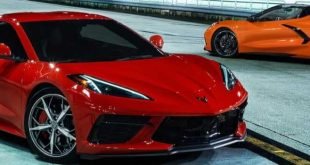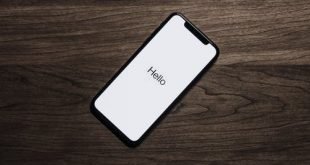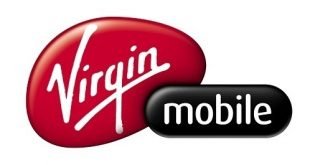SpaceX Tesla: you would be hard-pressed to find two companies that are more popular today.And yet, in the not too distant past both companies were basically unknown and were in fact simultaneously on the verge of bankruptcy.
Today we’ll learn how Elon Musk did what no other American CEO had ever done before: he created and then rescued two companies at the same time and brought them both to multi-billion dollar valuations.
In the early 2000s, Elon Musk achieved what any entrepreneur would dream of achieving: he successfully sold his company for over a billion dollars.
He personally received $165 million, and now this is where most people would call it quits, but for Elon, this was just the beginning.
He wanted to change the world for the better, and one of his ideas was to send a greenhouse to Mars in order to boost public interest in space exploration and hopefully increase NASA’s budget.
The idea was outlandishly ambitious, especially because Elon wanted to spend no more than$20 million on it. Now at the time, sending just 500 pounds to orbit could easily cost upwards of $30 million,but Elon had a plan.
He traveled to Russia, where he tried to buy refurbished Intercontinental ballistic missiles.But the lowest price the Russians gave him was $8 million a piece, about 50% above his budget for the rocket itself.On the way back from Moscow, Elon did some back-of-the-napkin calculations: he figured out that the raw materials used in the making of a rocket were only about 3% of the final sales price.
Instantly, Elon knew what he had to do: if he wanted to send anything to Mars, he’d have to build himself a vertically-integrated rocket company.
To that end, he read several books on rocketry from the Cold War and in June 2002 he incorporatedSpace Exploration Technologies, or SpaceX for short.
He then set about recruiting the right people who could make his vision a reality: his ideal candidate was young, single, educated and ready to give up his social life for SpaceX.
Elon’s recruitment strategy was very straightforward: he’d basically call up anyone fitting that profile, from fresh aerospace graduates to the rising stars in Boeing and Lockheed Martin.
At first people thought Elon was making pranks, but within a year he had assembled some of the brightest engineers in America. Together they would design almost everything for SpaceX: from the engines and rocket bodies to even smallest details, like the circuitry.
In many cases, the engineers could build stronger and more lightweight components at just a fraction of the regular price.
These components would be used to build the Merlin engine, which in turn would power Elon’sfirst rocket, the Falcon 1. Development was far from smooth, of course, but nevertheless, progress was being made.But then, Elon decided to up the ante.
In early 2004 he participated in the funding round of a new electric car company calledTesla.
Elon personally invested a little over $6 million and in return became the chairman of the company’s board.Right off the bat Elon began applying his experience from SpaceX at Tesla.
The company’s logo, for example, was created by the same people that made the logo for SpaceX. And of course, Elon was quick to use the same aggressive hiring strategy he used to assemble the SpaceX team.
This time, however, instead of poaching employees from Boeing, he was hiring from Apple.Before long, the Tesla team was working on their first electric car, the Tesla Roadster.
Back at SpaceX, engineers were clocking in 60-hour workweeks, while Elon was promising very ambitious timelines.
In fact, his original estimate was to launch the Falcon 1 in November 2003, just 18 months after the company was founded.Of course, that estimate got pushed back, and the Falcon 1 wouldn’t lift off untilMarch 2006, when it spent a total of 41 seconds in the air before crashing down violently.
Like for SpaceX, 2006 was a big year for Tesla.In July, the Tesla Roadster made its first official appearance and recorded 100 pre-orders in its first day.But, like with the Falcon 1, the actual production wasn’t going very well.
Tesla’s CEO at the time was Martin Eberhard, and like Elon, he was promising unrealistic timeframes.
At first, the idea was to deliver the Roadster in early 2007, but an escalating series of production issues pushed the release date farther and farther away.
In the end, Martina’s mismanagement of the Roadster project got him ousted from the very company he had founded, leaving Elon in charge of everything.With full responsibility over both companies, the stress was starting to pile up.
Elon witnessed the second failure of the Falcon 1 rocket, which didn’t complete its only2007 flight.
At Tesla, Elon struggled fixing the mess left behind by Eberhard, and in fact, the Roadster’s production would not begin until March 2008.
But then, things got worse: in August, Elon launched his third Falcon 1, which never madeit to orbit and then just one month later his wife publicly announced their divorce.
[wp_ad_camp_3]Both of Elon’s companies were struggling to make a viable product and were running out of money fast.
In fact, by late October Tesla had only $9 million left to fund the entire company.Salaries were being delayed and Elon was faced with a choice.
He had already spent $70 million on Tesla and $100 million on SpaceX. With what little he had left, Elon had to choose whether to fund and secure the future of one company or to risk everything and gamble on saving both.
Fate gave Elon little time to think: the fourth and potentially final flight of the Falcon1 was approaching.
On September 28th, Elon got ready for his last chance to survive.
He stood in the SpaceX control center in LA and waited in silence.Then, the rocket took off, and the center burst out in ecstatic applause.SpaceX had finally delivered a working product: the Falcon 1 became the first privately-developed rocket to go into orbit around Earth.
But Elon wasn’t in the clear just yet: a working product would mean nothing if the company behind it went bankrupt.In a frantic scramble, Elon had to figure out funding solutions for both his companies before the end of 2008, and the timing couldn’t have been worse.One of the largest American banks, Lehman Brothers, had collapsed and the global economy was heading towards disaster.
In the midst of this, Elon was raising all the personal funds he could to save Tesla:he liquidated his few remaining assets and even got his cousins to pitch in.
But getting investors on board doesn’t happen overnight, and December was creeping in.Elon had managed to scrape together $20 million himself, another $20 million from various investors and $50 from the German car company Daimler.
Days before Christmas, it seemed as if only Tesla was going to make it, but then on December 23 Elon received a very unexpected call: NASA had awarded SpaceX with a $1.6 billion contract to resupply the International Space Station.Then, on Christmas Eve, the Tesla deal went through.
Elon had successfully saved both companies from bankruptcy.In later interviews, he’d recall these final days in December in painful detail: he admits that this was the closest he had ever gotten to a nervous breakdown and honestly,any lesser man would’ve outright given up.So regardless of the struggles Elon might be facing today, it’s worth knowing that years ago he overcame the impossible.
Now, this story is just a brief chapter in the journey of Elon Musk.
If you’d like to read the whole thing, you should check out Elon Musk’s biography Check out this here
 MobiTechInfo
MobiTechInfo








